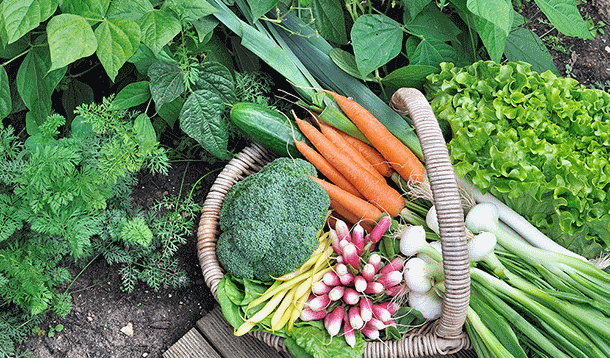Well, maybe the weather doesn’t agree everywhere, but the collection of plant catalogues sitting on my desk clearly says otherwise. For me, spring is the time to plan everything that I want to do outdoors once the snow officially melts and the ground warms up.

Planning a vegetable garden for a landscape designer should be easy, but apparently there is A LOT I still have to learn! General layout and flow of the raised beds is one thing, but what to put in them is something else entirely! After a few weeks of studying, I’ve realized that companion planting is more like creating a seating chart at a Shakespearean wedding. Who knew that so many veggies didn’t get along?

Here is what I’ve learned:
- Beans are the problem child in the garden! It seems that beans don’t play nice in the veggie patch. Beware of having beans with any of the onion family: no leeks, no chives, and no garlic near the beans! Beans and peppers are also not a great mix. I’m planting my beans near my chard, hoping that the chard will be strong enough to handle any stray runners.
- Tomatoes are definitely considered the jewel in any vegetable plot. That said, I have quickly learned that they are also the princesses… with lots of specific needs! There are several plants that inhibit the growth of tomatoes including all of the Brassicas family (cabbage, broccoli, cauliflower and Brussel sprouts). Corn, fennel and potatoes are also all no-nos near your tomatoes. Instead, plant your tomatoes with all of the plants that your beans didn’t like. Onions, chives, even basil make tomatoes shine.
- Plant lots of sage and thyme. These two herbs are the popular ones, getting along with almost every other veggie. Just be careful how you plant them as both of these perennials can take over. I am planning on planting these in larger pots in the garden. The big pots buried in the soil give the plants room to grow, but prevent some of the spread that occurs via roots.

If you are new to the vegetable garden scene, trust me, do your research! Authors like Mark Cullen, Niki Jabbour and Frank Ferragine have done all of the research for you! Growing veggies in small spaces and maximizing the amount of produce has become a science. Don’t assume that how your mother grew potatoes is the best way anymore. I can promise that growing vegetables is going to be a lot of work, but that first salad from your efforts is going to make it all worthwhile!
 RELATED: Easy Ways To Start Your Seeds This Spring
RELATED: Easy Ways To Start Your Seeds This Spring



